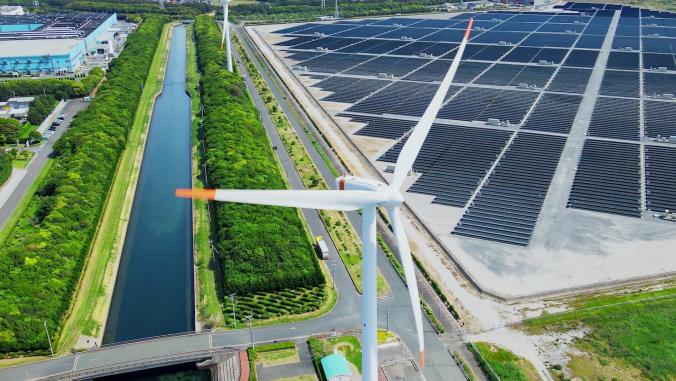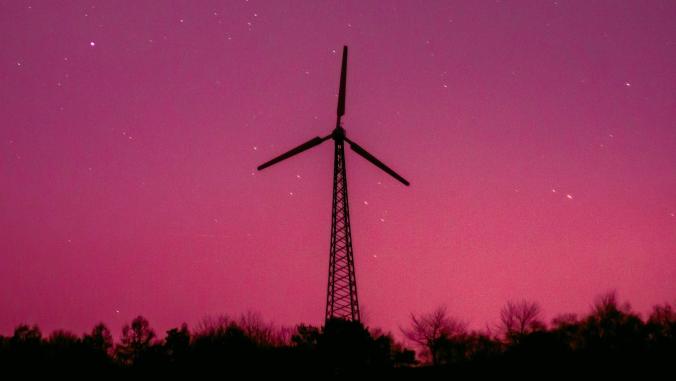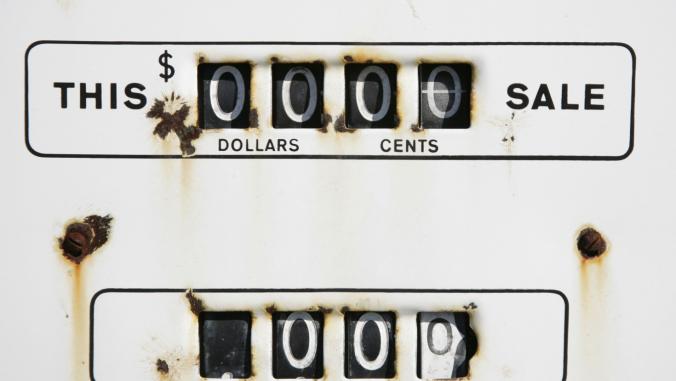Since it was first set up in the wake of the 1973 oil crisis, the International Energy Agency (IEA) has been a hugely influential player in world energy politics.
It provides direct advice to governments and its annual World Energy Outlook reports, which offer projections for future energy sources and demand, have provided the bedrock for major energy investment and policy decisions that help shape the trajectory of the global market.
As such, the IEA's report out this week, "Net Zero by 2050: A Roadmap for the Global Energy Sector" is nothing less than a watershed moment for the global economy. At 225 pages long, it is chock full of data, projections and 400 suggested milestones and targets for governments and businesses to gauge their progress against as they strive to decarbonize the global energy system within three decades.
Requested by the U.K. government to help inform debate and discussion ahead of the crucial COP26 Climate Summit in Glasgow later this year, some of the report's recommendations are startling and sobering, others are perhaps less surprising — at least to those who have long called for ambitious climate action. But overall the core conclusion is clear: The myriad benefits of a net-zero energy system far outweigh the costs, but the time left to grasp them is short, and ambitious action is needed without delay.
This headline rallying call is backed by a number of critical trends that the IEA argues will have to be accelerated if the world is to have any chance of delivering on its Paris Agreement goals:
1. The death knell is being sounded for fossil fuels
By far the most startling aspect of this week's report is the outlook for fossil fuels. On this point, the IEA is perfectly clear: If the world is to achieve net-zero emissions by 2050, there should be no new investments in oil and gas production fields, coal mines or unabated coal power plants beyond 2021.
The only room for fossil fuels in 2050 may be in the production of hard-to-abate heavy industrial manufacturing, plastics production — although as a separate report this week makes clear, the planet ideally needs that mostly bringing to an end as well — and in some power facilities fitted with carbon capture capability, the IEA contends. Crucially, by 2035, no cars powered purely by fossil fuels should be sold anywhere in the world, which effectively would remove a huge market for the oil industry.
The scale and speed of the efforts demanded by this critical and formidable goal ... make this perhaps the greatest challenge humankind has ever faced.
As such, the picture the IEA paints for fossil fuels in 2050 is stark: Unabated coal demand must fall by 90 percent to just 1 percent of energy use; oil declines by 75 percent to 24 million barrels per day, down from 90 million barrels per day in 2020; and gas demand declines by 55 percent to 1,750 billion cubic meters.
"The unwavering policy focus on climate change in the net-zero pathway results in a sharp decline in fossil fuel demand, meaning that the focus for oil and gas producers switches entirely to output — and emissions reductions — from the operation of existing assets," the report states.
Now of course, for those long ensconced in the climate fight, it is a no-brainer that net zero is incompatible with digging up and burning fossil fuels. But such conclusions are hugely significant when they come from the IEA —- a hugely influential organization that has long held a reputation for underestimating the potential of renewables, and overstating the long-term demand outlook for oil and gas.
Governments, businesses, investors and fossil fuel companies that have yet to take the net-zero transition seriously surely will be forced to sit up and take note of the scale of the threat to their future business models. If the IEA's roadmap is followed, then it suddenly becomes very hard to justify any investments in new fossil fuel infrastructure capacity.
2. Most fossil fuel majors are far behind the curve
For decades, major fossil fuel companies have hung their business strategies on top of the IEA's annual World Energy Outlook projections, arguing demand for their wares is set to continue to for decades to come and in many cases far beyond 2050.
But with the IEA sending a crystal clear signal that fossil fuels must be mostly phased out within the next two to three decades, there is a gaping chasm between the strategies recommended to governments and investors and that pursued by many fossil fuel majors.
With precipitous timing, Shell's landmark shareholder vote this week on its 2050 net-zero plan — the first of its kind in the energy sector — served to highlight that very gulf, and just how quickly the conversation is moving. While the oil major's shareholders voted overwhelmingly (89 percent) in favor of it, and the plan is arguably more ambitious than many of Shell's rivals in the sector, it still remains far below the rapid rate of decarbonization the IEA maintains is required to keep the Paris Agreement goals within reach. It is against this backdrop that a rival shareholder resolution calling for a more ambitious decarbonization strategy from the energy giant also secured sizeable support.
Contrary to the IEA's conclusions that no further fossil fuel exploration is needed after 2021, Shell's plan aims to "grow natural gas supply to keep our plants full" — admittedly largely from third parties — while creating vast carbon sinks for offsets to justify its continued fossil fuel production.
Such a strategy no longer can be deemed credible, argued Kelly Trout, interim energy transitions and futures program director at campaign group Oil Change International. "Governments, banks and big oil and gas companies can no longer use the IEA as a shield to claim that their support for fossil fuel expansion is consistent with the Paris Agreement," she said. "Today's report should herald the end of any excuses for continued fossil fuel expansion."
Or, as Dave Jones, global lead at climate think tank Ember, more pithily put it: "This is truly a knife into the fossil fuel industry."
The IEA's report should send shockwaves around fossil fuel majors and their investors worldwide. There can be no more excuses for burying heads in the sand.
3. A 'wake-up call' for natural gas
For coal power, in the Global North at least, the writing has been on the wall for some time, with market, regulatory and societal pressures — combined with the rapid rise of cheaper renewables — serving to deal major blows to the once-dominant position of the coal industry. More recently, one of the biggest markets for oil — transport — also has been forced to contend with growing numbers of major economies signaling a phase-out of fossil fuel car sales within the next 10 to 15 years, alongside the acceleration of the electric vehicle (EVs) market.
Against such a backdrop, the fossil fuel industry has sought to argue that natural gas can act as a "bridge fuel" for the green energy transition, as it is less carbon-intensive, cheaper and more efficient than coal power. Teamed up with carbon capture, utilization and storage (CCUS) technologies, gas power therefore can play a significant role in the energy system for decades to come, it has been argued.
But while it is true the IEA's report this week is far more vague on the net-zero roadmap for gas than it is for oil and coal, it nevertheless deals a major blow to the bridge fuel argument. To deliver net zero emissions by mid-century, natural gas use in electricity must peak in the mid-2020s "before starting to fall back," it states, while its role in heating homes and buildings also looks numbered. The report states that no new fossil fuel boilers should be sold from as soon as 2025, a conclusion of particular note in the U.K., which currently envisages gas boilers will continue being sold into the 2030s.
Maria Pastukhova, senior policy adviser on energy diplomacy at climate think tank E3G, described the IEA's report as "a turning point for the global gas industry."
"A continuous expansion trajectory is no longer plausible; instead, this report is charting the exit pathways of some parts of the gas value chain already, in particular the upstream," she explained. "With projected massive shifts in energy systems and investment flows away from gas, this should be a wakeup call to investors around the globe."
A strong pipeline of new gas power projects remains around the world, including in the U.K. It remains to be seen whether the IEA's roadmap can trigger a rethink or whether carbon capture and hydrogen innovations provide justification for continued investment in gas infrastructure.
4. Solar and wind power will dominate the net-zero economy
If fossil fuels are on the way out, then alternatives are needed to pick up the slack, and the IEA scarcely could be clearer about the direction in which investment, regulatory support and action must be rapidly channeled — and in huge volumes.
A 2050 net-zero economy must be dominated by renewable energy, it concludes. In electricity alone — which the IEA says must reach net zero by 2040 worldwide — renewables make up around 90 percent of demand, with wind and solar alone accounting for 70 percent. Nuclear, meanwhile, would make up the remaining 10 percent.
But the report emphasizes that delivering on such a vision requires a monumental increase in clean power capacity worldwide: 630 gigawatts of new solar and 390 GW of new onshore and offshore wind each year by 2030, which is around four times the record-setting amount added in 2020. That, too, requires a major rewiring of national power grids to accommodate the vast projected increase in intermittent renewables alongside the growth of EVs, meaning more battery storage and flexible energy technologies.
But while those numbers are certainly big and many magnitudes greater than today's capacity additions, fortunately, in many parts of the world, renewables are already cheaper than building fossil fuel plants or are certainly well on the way to being so over the next decade.
As such, while delivering an energy transition in line with net-zero goals is a formidable challenge, it also remains achievable, according to the Global Wind Energy Council's (GWEC) head of policy and projects Joyce Lee.
"This report is a blaring siren for governments across the world that they can no longer drag their feet and need to get serious about deploying renewables," she said. "To meet this challenge, action taken by governments must be urgent and focussed. We shouldn't get distracted by emerging technologies like CCUS, when it is undeniable that the majority of emissions reductions will come from the displacement of fossil fuels by wind and solar, which are already mature, affordable and ready to be deployed across the world."
5. Further technological development is crucial
U.S. Climate Envoy John Kerry caused a stir this week with his suggestion that "50 percent of the reductions [in emissions] we have to make to get to net zero are going to come from technologies that we don't yet have."
Many pushed back on Kerry's claim, arguing that focusing too much on unproven climate solutions is a risky bet and that many clean technologies that are proven to drive down emissions are already in action today — they merely need rolling out far more widely.
The IEA's roadmap, meanwhile, sets out the challenge as follows. Between now and 2030, most emissions reductions must come from shifting away from fossil fuels towards renewables, EVs and electrification, further bolstered by better energy efficiency. Then, by 2050, half of the emissions reductions are expected to come from technologies currently at the demonstration or prototype phase, which requires major research and development spending programs from governments today to lay the foundations for that future decarbonization technology. "Progress in the areas of advanced batteries, electrolyzers for hydrogen and direct air capture and storage can be particularly impactful," the report states.
But as several commentators pointed out, what's perhaps surprising about the IEA's roadmap is that its focus remains largely on wind, solar and energy efficiency to do the bulk of the heavy lifting, leaving a relatively small, but still crucial, role for hydrogen and carbon capture and storage.
With projected massive shifts in energy systems and investment flows away from gas, this should be a wakeup call to investors around the globe.
For example, in 2050 it estimates a need for 1.9 gigaton of CO2 removal, 7.6Gt of CCUS including in conjunction with bioenergy, and 520 million tonnes of low carbon hydrogen demand. The demand here is largely earmarked for heavy industry, with CCUS-equipped power plants contributing just 3 percent of total electricity generation in 2050 and accounting for around 20 percent of captured carbon, it states.
Even so, significant R&D investment is clearly still needed to support decarbonization alongside the envisioned expansion of wind and solar capacity. E3G's senior policy advisor on industrial decarbonization Johanna Lehne said the report presents "a radical transformation of industrial sectors globally." "It shows steel, cement and chemicals sectors powering past coal towards electrification, material efficiency and breakthrough clean technologies — with CCUS playing a smaller role than previously foreseen," she explained. "There is a clear call to action here for policymakers, particularly in advanced economies to make this vision a reality. They will need to push forward with concerted policy efforts and ramp up research, design and development investment to bring down the costs of key technologies globally."
6. The challenge is formidable but offers huge benefits
All in all, the IEA estimates the total annual energy investment required to deliver on its net-zero vision stands around $5 trillion by the end of the current decade.
That is a very large sum indeed, but the report is also quick to stress that such an investment surge would add around 0.4 percentage points a year to global GDP growth, and would leave it around 4 percent higher by 2030 than under current growth trends.
What's more, besides averting a climate catastrophe for which the reasonable worst-case scenarios are unimaginably bleak, myriad other benefits would result from an ambitious, rapid shift to a net-zero economy worldwide, the report argues. For one, it promises millions of new green jobs, as well as cleaner air that could drive major health benefits, potentially cutting the number of premature deaths by 2.5 million a year worldwide. Moreover, the IEA's vision eyes providing electricity to around 785 million people who currently lack such access, as well as cleaner cooking solutions to 2.6 billion people.
Launching the report, IEA's executive director Fatih Birol scarcely could have been a bigger cheerleader for the net-zero transition, which he described as "a huge opportunity for our economies." "The IEA's pathway to this brighter future brings a historic surge in clean energy investment that creates millions of new jobs and lifts global economic growth," he said.
But once governments, businesses and investors have finished digesting the report, there is no time to lose in delivering on its recommendations. Far more renewables and far fewer fossil fuels are urgently needed, and the analysis report delivers the loudest and clearest clarion call for a rapid net-zero transition to date.
As Birol put it himself: "The scale and speed of the efforts demanded by this critical and formidable goal — our best chance of tackling climate change and limiting global warming to 1.5C — make this perhaps the greatest challenge humankind has ever faced."






